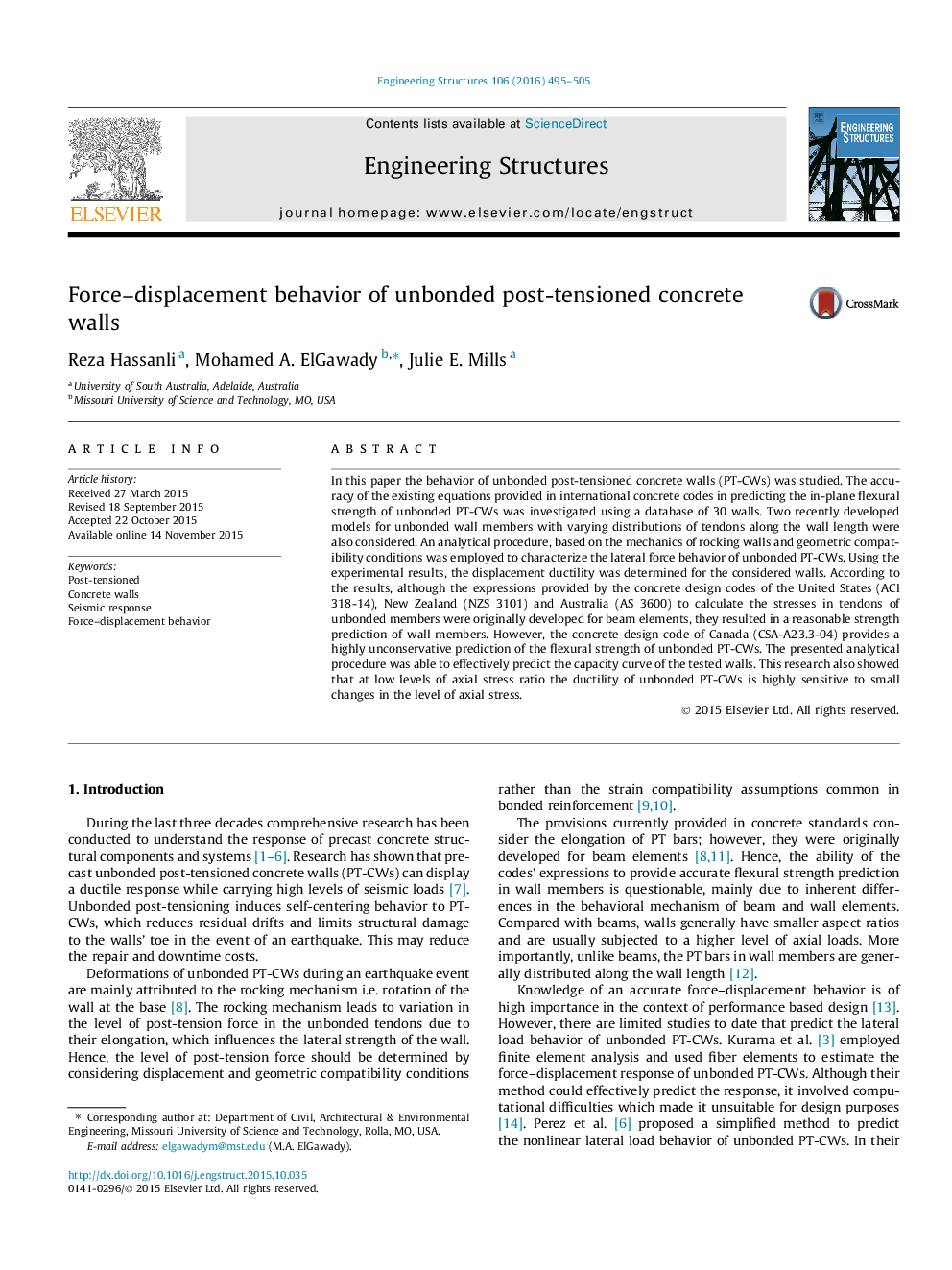| Article ID | Journal | Published Year | Pages | File Type |
|---|---|---|---|---|
| 266008 | Engineering Structures | 2016 | 11 Pages |
•The accuracy of predicting the flexural strength of PT-CW is investigated.•The ductility and response modification factors of unbonded PT-CWs are evaluated.•Expressions and recommendations are provided to estimate the ductility and response modification factors of PT-CWs.•An analytical approach can accurately predict the force-displacement of PT-CWs.
In this paper the behavior of unbonded post-tensioned concrete walls (PT-CWs) was studied. The accuracy of the existing equations provided in international concrete codes in predicting the in-plane flexural strength of unbonded PT-CWs was investigated using a database of 30 walls. Two recently developed models for unbonded wall members with varying distributions of tendons along the wall length were also considered. An analytical procedure, based on the mechanics of rocking walls and geometric compatibility conditions was employed to characterize the lateral force behavior of unbonded PT-CWs. Using the experimental results, the displacement ductility was determined for the considered walls. According to the results, although the expressions provided by the concrete design codes of the United States (ACI 318-14), New Zealand (NZS 3101) and Australia (AS 3600) to calculate the stresses in tendons of unbonded members were originally developed for beam elements, they resulted in a reasonable strength prediction of wall members. However, the concrete design code of Canada (CSA-A23.3-04) provides a highly unconservative prediction of the flexural strength of unbonded PT-CWs. The presented analytical procedure was able to effectively predict the capacity curve of the tested walls. This research also showed that at low levels of axial stress ratio the ductility of unbonded PT-CWs is highly sensitive to small changes in the level of axial stress.
